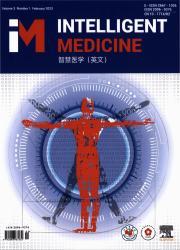在健康人群中使用可穿戴传感器进行无创间质血糖预测的特征学习方法的比较:一项试点研究
IF 6.9
Q1 COMPUTER SCIENCE, INTERDISCIPLINARY APPLICATIONS
引用次数: 0
摘要
葡萄糖代谢的改变,尤其是餐后葡萄糖反应(PPGR),是代谢功能障碍的重要因素,是代谢综合征发病机制的基础。个性化的低血糖饮食已经显示出减少餐后血糖峰值的希望。然而,目前用于评估PPGR的有创性连续血糖监测(CGM)或多组学数据整合等方法存在局限性,包括成本和侵入性,阻碍了这些方法在原发性疾病预防中的广泛采用。我们的目的是评估使用非侵入性可穿戴设备预测个体PPGR的机器学习算法,从而规避与现有方法相关的局限性。通过确定最准确的模型,我们寻求提供一种更容易获得和有效的方法来管理葡萄糖代谢功能障碍。方法采用来自SENSE(“systememische Ernährungsmedizin”)研究的实验数据集进行数据驱动分析。健康参与者使用Empatica E4腕带和雅培Freestyle Libre 3 CGM 10天。测量血容量、脉搏、皮电活动、心率、皮肤温度及相应的CGM值。随后,研究人员实施了四种数据驱动的深度学习(DL)模型——卷积神经网络、轻量级变压器、带注意的长短期记忆和双向LSTM (BiLSTM),并对其进行了比较,以确定DL在不涉及食物和活动日志的情况下预测间质葡萄糖水平的潜力。结果所提出的BiLSTM具有最佳的间质葡萄糖预测性能,平均均方根误差为13.42 mg/dL,平均绝对百分比误差为0.12,在Clarke误差网格分析中,仅有3.01%的值落在D区域内,采用留一交叉验证策略,预测时间为5分钟。结论本研究结果可能证明将从有创血糖监测装置获得的知识转移到无创方法的可行性。此外,它可以强调将DL与可穿戴技术结合起来预测健康个体的血糖水平的前景。本文章由计算机程序翻译,如有差异,请以英文原文为准。
Comparison of feature learning methods for non-invasive interstitial glucose prediction using wearable sensors in healthy cohorts: a pilot study
Background
Alterations in glucose metabolism, especially the postprandial glucose response (PPGR), are crucial contributors to metabolic dysfunction, which underlies the pathogenesis of metabolic syndrome. Personalized low-glycemic diets have shown promise in reducing postprandial glucose spikes. However, current methods such as invasive continuous glucose monitoring (CGM) or multi-omics data integration to assess PPGR have limitations, including cost and invasiveness that hinder the widespread adoption of these methods in primary disease prevention. Our aim was to assess machine learning algorithms for predicting individual PPGR using non-invasive wearable devices, thereby, circumventing the limitations associated with the existing approaches. By identifying the most accurate model, we sought to provide a more accessible and efficient method for managing glucose metabolic dysfunction.
Methods
This data-driven analysis used the experimental dataset from the SENSE (”Systemische Ernährungsmedizin”) study. Healthy participants used an Empatica E4 wristband and Abbott Freestyle Libre 3 CGM for 10 days. Blood volume pulse, electrodermal activity, heart rate, skin temperature, and the corresponding CGM values were measured. Subsequently, four data-driven deep learning (DL) models-convolutional neural network, lightweight transformer, long short-term memory with attention, and Bi-directional LSTM (BiLSTM) were implemented and compared to determine the potential of DL in predicting interstitial glucose levels without involving food and activity logs.
Results
The proposed BiLSTM achieved the best interstitial glucose prediction performance, with an average root mean squared error of 13.42 mg/dL, an average mean absolute percentage error of 0.12, and only 3.01% values falling within area D in Clarke error grid analysis, incorporating the leave-one-out cross-validation strategy for a five-minute prediction horizon.
Conclusion
The findings of this study may demonstrate the feasibility of transferring knowledge gained from invasive glucose monitoring devices to non-invasive approaches. Furthermore, it could emphasize the promising prospects of combining DL with wearable technologies to predict glucose levels in healthy individuals.
求助全文
通过发布文献求助,成功后即可免费获取论文全文。
去求助
来源期刊

Intelligent medicine
Surgery, Radiology and Imaging, Artificial Intelligence, Biomedical Engineering
CiteScore
5.20
自引率
0.00%
发文量
19
 求助内容:
求助内容: 应助结果提醒方式:
应助结果提醒方式:


